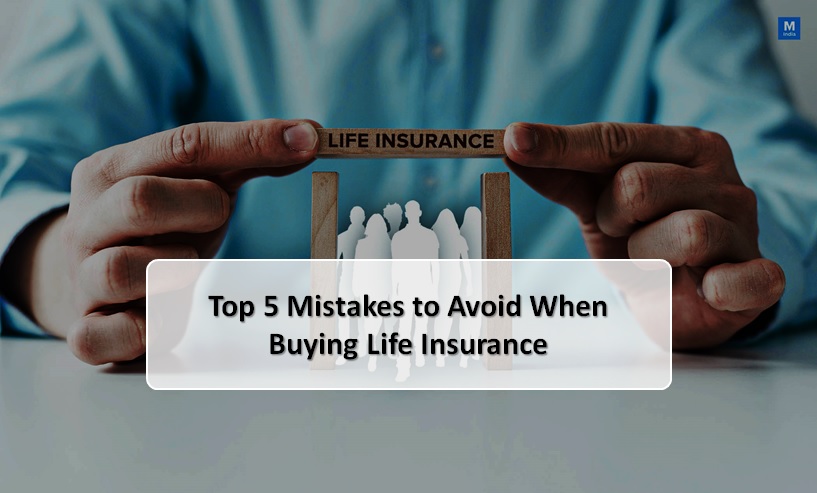Introduction: Why Life Insurance Is a Must-Have
Life insurance is one of those topics most people don’t want to think about—until it’s too late. Yet it’s one of the most important financial decisions you’ll ever make. Whether you’re a parent, a spouse, a business owner, or even a single adult with dependents, life insurance serves a critical role in protecting the people you care about most.
Imagine this: You work hard your entire life to build something—security for your family, a home, a lifestyle, maybe even a legacy. Now imagine it all disappearing in a flash because of one unexpected event. Life is unpredictable. Accidents happen. Illness can strike at any time. Without life insurance, your loved ones could be left not only grieving your loss but also facing serious financial hardship.
Life insurance isn’t just a policy—it’s peace of mind. It ensures your children can still go to college, your mortgage can still be paid, and your partner won’t have to shoulder the burden of your debts. It’s not just for “older people” either. In fact, buying life insurance when you’re young and healthy can save you a lot of money in premiums down the road.
Moreover, in today’s world, with rising costs of living and healthcare, life insurance is no longer optional—it’s a necessity. It’s a foundational part of financial planning, like saving for retirement or investing in real estate. If you don’t have a plan in place, you’re not just risking your future—you’re risking the future of everyone who depends on you.
Mistake #1: Not Understanding the Different Types of Life Insurance
One of the most common—and costly—mistakes people make when buying life insurance is simply not understanding what they’re buying. Life insurance isn’t a one-size-fits-all product. There are several types, each with its own purpose, benefits, and drawbacks. Choosing the wrong one can lead to wasted money, inadequate coverage, or even the cancellation of your policy later on.
The two main types of life insurance are term life insurance and permanent life insurance (which includes whole life, universal life, and variable life). Term life insurance is the most straightforward and affordable option—it provides coverage for a set period of time (usually 10, 20, or 30 years) and pays out only if you die during that term. It’s great for people who want high coverage at a low price, like young families or people with mortgages.
On the other hand, permanent life insurance is more complex and expensive. These policies last your entire life and often include an investment or savings component. For example, whole life insurance builds cash value over time, which you can borrow against later. While this may sound appealing, many people don’t realize that the fees and commissions can eat away at those savings. It’s not always the best financial move unless you have specific estate planning needs.
There are also hybrid policies, no-exam policies, and even group life insurance offered by employers. Each comes with its own pros and cons, and making a choice without understanding these differences is like buying a house without knowing the neighborhood.
Before purchasing any policy, take the time to compare types, ask questions, and even talk to a licensed insurance advisor. The right policy for someone else might be completely wrong for you. Educate yourself so you’re not just buying coverage—you’re making a smart, informed decision that will pay off in the long run.
Mistake #2: Buying Too Little or Too Much Coverage
Another major mistake many people make is buying either too little or too much life insurance coverage. In both cases, the consequences can be significant.
Let’s start with too little coverage. Imagine you purchase a $100,000 policy thinking it sounds like a lot. But if you have a mortgage, two kids, and outstanding debts, that money could vanish within a year—or even a few months. Your family might struggle to pay basic expenses, let alone maintain their lifestyle. The emotional and financial toll could be devastating.
So how much is enough? A common rule of thumb is 10–15 times your annual income, but the truth is it depends on your personal situation. You’ll want to factor in things like:
- Mortgage or rent payments
- Childcare or education costs
- Outstanding loans or credit card debt
- Everyday living expenses for your family
- Final expenses (funeral, medical bills)
- Future goals, like college tuition for your kids
On the flip side, buying too much coverage might seem like a generous move—but it can drain your finances unnecessarily. High premiums can become a financial burden, especially if your needs change later in life. Why pay for a $2 million policy when your family might be just as secure with $750,000?
Over-insuring also raises red flags with insurance companies, potentially leading to delays or denials in coverage. And let’s not forget—you could be using those extra funds to invest elsewhere, like in a retirement fund or real estate.
Bottom line: It’s all about balance. Use a life insurance calculator, speak to a financial planner, and consider your family’s actual needs. Don’t guess—plan.
Mistake #3: Choosing the Wrong Beneficiary
Choosing a beneficiary might seem like the simplest part of the process—but it’s actually one of the most critical, and one of the easiest to mess up.
First, let’s clarify: A beneficiary is the person (or people) who will receive the life insurance payout after you pass away. That money could be used to pay bills, fund education, or simply help loved ones stay financially stable during a difficult time. But if you name the wrong person—or forget to update your beneficiary—you could be setting your family up for chaos.
For example, many people forget to update their beneficiaries after a major life event like marriage, divorce, or the birth of a child. Imagine passing away and your life insurance payout goes to your ex-spouse instead of your current partner. It happens more often than you’d think.
Another mistake is naming a minor child as the primary beneficiary. While this might seem like the obvious choice, minors can’t legally receive life insurance payouts. The money would likely be tied up in probate court until a legal guardian is appointed, which could take months or even years.
Also, some people name only one beneficiary without listing a backup (called a contingent beneficiary). If your primary beneficiary passes away before you and there’s no backup, the payout could go to your estate, leading to tax implications and delays.
To avoid these issues:
- Regularly review and update your beneficiary designations.
- Avoid naming minors unless a trust or guardian is involved.
- Clearly identify your contingent beneficiaries.
- Make sure your beneficiaries know they’re listed on your policy.
Remember, life insurance is meant to provide clarity and financial protection—not confusion and conflict. Don’t let a simple oversight undo everything you worked for.
Mistake #4: Not Comparing Quotes from Multiple Providers
One of the biggest and most overlooked mistakes people make when buying life insurance is failing to shop around. Many people accept the first quote they get—often from a friend’s recommendation or a random online ad—without doing any comparison. But just like you wouldn’t buy the first car you see on a lot, you shouldn’t buy the first insurance policy that crosses your screen.
Life insurance companies are not all the same. They use different formulas to calculate risk, premiums, and coverage options. One company might offer a $500,000 policy for $30 a month, while another charges $50 for the exact same coverage—and offers fewer benefits.
In fact, some insurers specialize in covering younger individuals with better rates, while others may offer better deals for seniors or those with pre-existing conditions. Not comparing quotes means you might be paying significantly more than necessary or missing out on better coverage terms.
The good news is that it’s easier than ever to compare quotes. Online marketplaces and insurance comparison websites let you see multiple offers side by side. But don’t stop there—also research customer reviews, financial strength ratings (from companies like A.M. Best or Moody’s), and each company’s history of paying claims. Cheap premiums mean nothing if the company fights payouts or goes bankrupt when you need them most.
Bottom line: spend a few extra hours comparing policies and companies. It could save you thousands of dollars over the life of your policy and ensure you get the best possible coverage for your needs.
Mistake #5: Waiting Too Long to Buy Life Insurance
Many people delay buying life insurance because they think it’s something they’ll need “later.” Maybe they’re young and healthy, or not married yet, or they don’t have kids. They assume there’s no rush. But here’s the truth: the best time to buy life insurance is right now—while you’re still young and in good health.
Why? Because life insurance premiums are based on your age and medical condition. The older you are, and the more health issues you have, the more expensive your premiums will be. In fact, a policy that costs $20 per month at age 25 could cost $80–100 by age 40—or worse, you might be denied coverage altogether if you develop a chronic condition.
Even if you don’t have dependents now, locking in a low premium while you’re young is a financially smart move. Some policies even allow you to increase your coverage later without redoing a medical exam. Think of it as future-proofing your life.
Also, accidents and illnesses don’t wait for the “right time.” No one expects to get cancer, be in a car accident, or suffer a sudden health crisis. Waiting too long puts your family at risk—and you might not get a second chance.
In short, don’t wait. Buy now while the rates are affordable, and secure your loved ones’ future while you still can.
Bonus Tip: Don’t Hide Health Information from Your Insurer
It might be tempting to “forget” to mention that you smoke occasionally or that you were once treated for depression. After all, who wants to pay higher premiums? But hiding information from your insurer is not just unethical—it can completely void your policy.
Insurance companies verify everything. When you apply for a life insurance policy, they may request medical records, order lab tests, and even check pharmacy databases. If they find inconsistencies or discover you lied on your application—even by omission—they can deny your claim.
Imagine this: you pass away, and your grieving family files a claim, only to be told the policy is void because you didn’t disclose a health condition or lifestyle habit. It’s a devastating outcome that could have been avoided with honesty.
Some insurers even offer “non-medical” policies that don’t require a full health check. While these usually have higher premiums, they are still a good option for those with pre-existing conditions or people who want quick approval. But even then, honesty is key.
Be transparent. You might pay a little more in the beginning, but your loved ones will get what you intended them to have when it really matters.
How to Choose the Right Life Insurance Policy
Choosing the right life insurance policy can feel overwhelming, especially with all the jargon, fine print, and sales pressure. But don’t worry—if you break it down into simple steps, it becomes much more manageable.
1. Assess Your Needs
Start by asking yourself some questions:
- Who depends on me financially?
- How much debt do I have?
- Do I want to cover my funeral costs?
- Do I want to leave a legacy or donation?
Once you have a clear picture of your financial obligations and goals, you’ll have a better sense of how much coverage you need.
2. Set Your Budget
Be realistic. There’s no point in signing up for a $1 million policy if you can’t afford the monthly payments. Choose a policy that balances coverage with affordability. Term policies are great for this—they give you the most bang for your buck.
3. Decide Between Term and Permanent
- Term life is simple, affordable, and ideal for temporary needs (e.g., until your kids graduate or your mortgage is paid).
- Whole life or universal life lasts a lifetime and includes investment components, but they’re more expensive and complex.
If you’re just starting out, term life is usually the smarter choice. You can always convert it to a permanent policy later if your needs change.
4. Compare Multiple Providers
As mentioned earlier, don’t go with the first offer. Use comparison tools or brokers to get multiple quotes. Read reviews. Check their claim payout reputation. The cheapest policy isn’t always the best.
5. Read the Fine Print
Make sure you understand what’s covered, what’s not, and under what circumstances your policy could be voided. Ask about things like:
- Grace periods
- Policy riders (e.g., accidental death, critical illness)
- Payout timelines
- Renewal conditions
6. Work with a Licensed Professional
Finally, consider speaking with a financial advisor or licensed insurance broker. They can help you find the right fit based on your life stage, goals, and budget.
✅ 20 Common Questions About Buying Life Insurance — Answered
1. What is life insurance and why do I need it?
Life insurance is a contract between you and an insurance company. You pay premiums, and in return, the company pays your beneficiaries a lump sum (called a death benefit) when you die. It provides financial security for your loved ones, covering debts, funeral costs, or replacing lost income.
2. What’s the difference between term and whole life insurance?
Term life covers you for a set period (e.g., 10, 20, 30 years) and is generally cheaper. Whole life lasts your entire life and builds cash value, but premiums are much higher. Choose term for affordability and temporary needs; whole life for lifetime coverage and investment.
3. How much life insurance coverage do I need?
A common rule of thumb is 10–15 times your annual income. But it depends on your debts, dependents, future goals (like college), and lifestyle. Use an online calculator or talk to a financial advisor.
4. Can I buy life insurance without a medical exam?
Yes. Many companies offer no-medical-exam policies. These are faster but often come with higher premiums or lower coverage. They may still check your prescription history or other databases.
5. What happens if I lie on my application?
Lying—about health, lifestyle, or smoking—can result in denied claims or policy cancellation. Always be honest to protect your family’s financial future.
6. Can I change my beneficiary later?
Yes, in most cases. You can update your beneficiary anytime unless it’s irrevocable. Keep this updated after major life changes (marriage, divorce, kids).
7. Is life insurance taxable?
Typically, no. Death benefits are not subject to income tax. However, if the benefit is part of an estate over a certain size, estate taxes may apply.
8. How do life insurance premiums work?
Premiums are based on your age, health, gender, lifestyle (e.g., smoking), and the type/amount of coverage. The younger and healthier you are, the lower the premium.
9. Is it better to buy life insurance when I’m young?
Absolutely. You lock in lower rates while healthy. Waiting can increase costs or limit options.
10. Can I have multiple life insurance policies?
Yes, you can. Many people stack policies to meet different needs (e.g., mortgage term + family income support).
11. How long does it take to get approved?
It can take a few days (for no-exam policies) to several weeks (for full underwriting). Delays often come from medical record reviews.
12. Do I need life insurance if I’m single with no kids?
It depends. If someone depends on you financially (e.g., aging parents), or you want to cover debts or burial expenses, yes. Also, getting insured early locks in low premiums.
13. Can I cancel my life insurance policy anytime?
Yes. With term policies, you can stop paying and it will lapse. With whole life, you may get some cash surrender value back.
14. What is a death benefit?
It’s the amount paid to your beneficiaries when you die. It’s usually a tax-free lump sum meant to replace lost income or cover expenses.
15. Can I name a child as a beneficiary?
You can, but if they’re under 18, the money may go into a trust or be managed by a court-appointed guardian until they come of age.
16. Do I need a lawyer to buy life insurance?
No, but talking to a financial advisor can help, especially for large policies or estate planning. Lawyers are useful for setting up trusts.
17. What is underwriting in life insurance?
Underwriting is the insurer’s process of evaluating your risk. They assess your health, lifestyle, and history to decide coverage and pricing.
18. Will my premiums ever increase?
For term life, premiums are usually fixed for the term length. For permanent policies, premiums can vary depending on the product.
19. Is it possible to get life insurance with a pre-existing condition?
Yes, though it may be harder or more expensive. Some companies specialize in high-risk applicants. Always shop around.
20. What’s the most common mistake people make when buying life insurance?
Not comparing policies or getting too little coverage. People often underestimate future needs or overpay by not shopping around.







